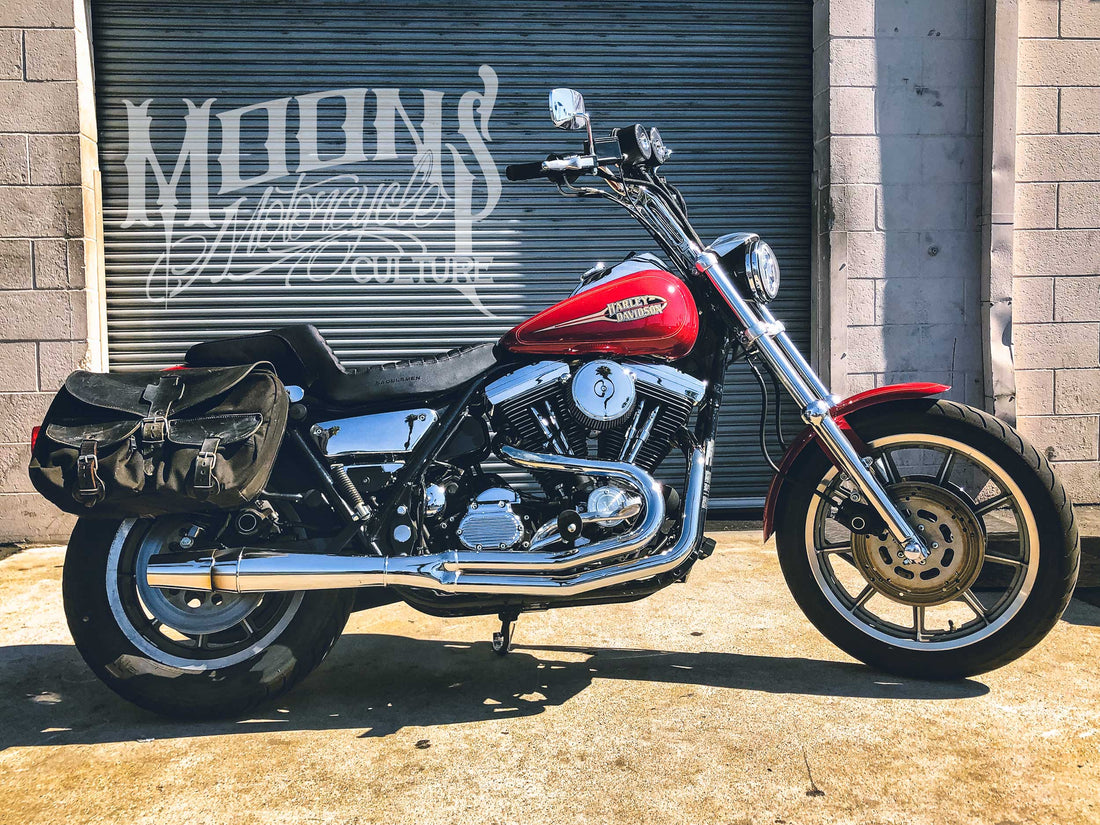The Harley-Davidson FXR represents a pivotal chapter in the storied history of the iconic American motorcycle manufacturer. Introduced in 1982, the FXR series was part of Harley-Davidson's efforts to reclaim its position in the heavyweight motorcycle market, combining innovative engineering with the traditional Harley aesthetic. This detailed exploration will take us through the inception, evolution, and lasting impact of the FXR on Harley-Davidson and the motorcycle world at large.
Origins and Development
The FXR story begins in the late 1970s, a period marked by significant challenges for Harley-Davidson. Competition from Japanese manufacturers, evolving consumer preferences, and technological advancements threatened the company's market share. In response, Harley-Davidson embarked on a project to revitalize its product lineup, focusing on performance, handling, and rider comfort without straying from its heritage.
The development of the FXR was spearheaded by a team led by Erik Buell, an engineer who later founded his own motorcycle company. The team's goal was to create a motorcycle that combined the traditional Harley V-twin engine with a new frame design that would improve handling and rider experience. This led to the introduction of the FXR's distinctive feature: a rubber-mounted engine within a frame that utilized a triangular swingarm and a series of linkages to offer improved stability and cornering performance.
The FXR Series: Innovation and Impact
Launched in 1982, the FXR series introduced several technical innovations that were new to the Harley-Davidson lineup. Its chassis was significantly lighter and stronger than previous models, thanks to extensive use of computer-aided design (CAD) tools. The rubber-mounted engine reduced vibration, a common complaint among Harley riders, enhancing comfort over long distances.
The initial models, including the FXR Super Glide II, FXRS Low Glide, and FXRT Sport Glide, offered variations to cater to different rider preferences, from the bare-bones Super Glide to the more tour-oriented Sport Glide. These motorcycles featured the powerful Shovelhead engine, which was later replaced by the Evolution engine in 1984, providing improved reliability, power, and reduced oil leaks, marking a significant advancement in Harley-Davidson's engineering.
The Evolution and Legacy
Throughout the 1980s and early 1990s, the FXR series evolved, with Harley-Davidson introducing several updates and limited edition models, such as the FXLR Low Rider Custom and the FXRS-SP Low Rider Sport. These models featured enhancements in performance, aesthetics, and comfort, solidifying the FXR's reputation as a versatile and reliable motorcycle.
Despite its popularity and critical acclaim, the FXR series was phased out in 1994, replaced by the Dyna, a model that sought to incorporate the FXR's handling prowess with a new aesthetic and technical improvements. However, the FXR's legacy did not end there. Its impact on motorcycle design, its cult following among riders, and its influence on subsequent Harley-Davidson models have kept the spirit of the FXR alive.
In recent years, the FXR has experienced a resurgence in popularity, with enthusiasts and custom builders alike seeking out these bikes for their blend of classic Harley-Davidson character and superior riding dynamics. The motorcycle has become a symbol of a pivotal era in Harley-Davidson's history, representing a successful blend of tradition and innovation.
Conclusion
The Harley-Davidson FXR series stands as a testament to the company's ability to innovate and adapt in the face of challenges. By blending traditional aesthetics with advanced engineering, the FXR helped pave the way for future generations of motorcycles. Its legacy continues to influence Harley-Davidson and the broader motorcycle industry, serving as a reminder of the importance of innovation, performance, and rider experience in the development of motorcycles. As we look back on the history of the FXR, it's clear that this series was more than just a set of motorcycles; it was a bold statement of Harley-Davidson's commitment to excellence and its unwavering spirit of adventure.

